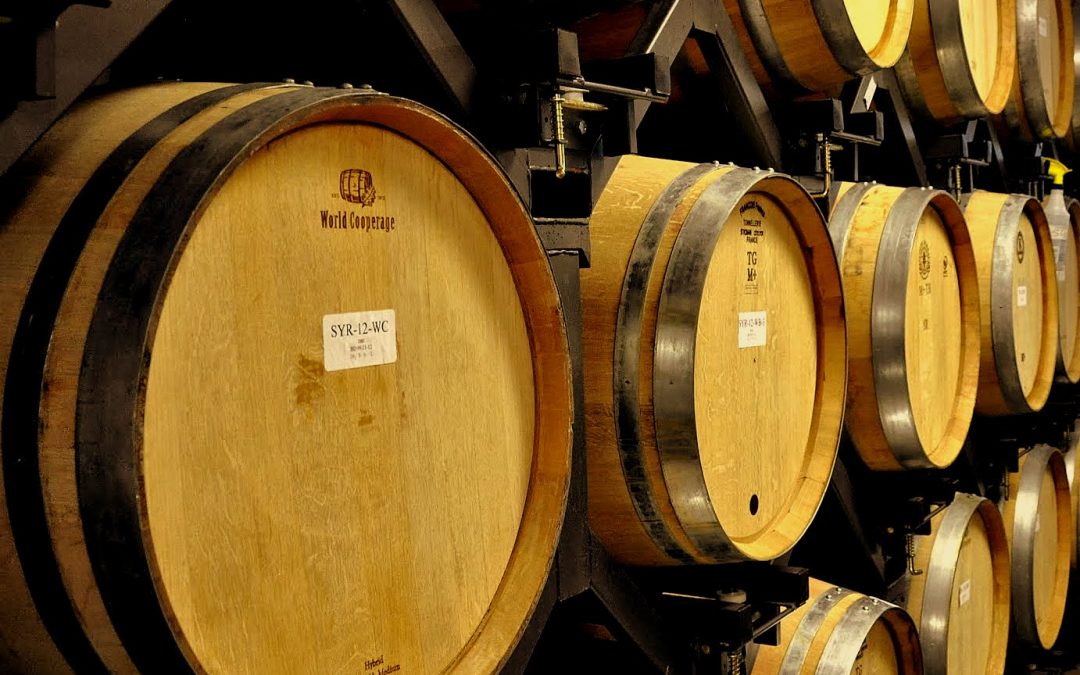Oak, to a winemaker, is like salt and pepper to the master chef. It’s not the main ingredient, but it matters more than you think. Used right, you get a product of exceptional flavor and quality. Used incorrectly and you are switching to beer.
Of the top 100 wines in the world, virtually all of the red wines and a vast majority of whites are stored in oak barrels for all or part of their aging process. Why? Because it’s how we do things. For over 2000 years, since the Romans switched from clay to wood vessels for their wine to lighten the load for the soldiers, we’ve been drinking wine aged in oak barrels. It’s a good thing, too, as we seem to have developed a fancy for what it does to our favorite fermented grape juice.
Why Oak?
As we said above, the first reason was because it was lighter than the clay amphora used previously. But there are other reasons:
- Oak was, and still is, abundant all over Europe and the US, making it easily accessible and renewable
- Oak has a very tight grain, making it a perfect waterproof storage device
- Oak is a relatively soft wood, making it easier for bending into barrel shape, therefor making it faster and more efficient for construction
- Oak barrels just look cool, and make even the most OCD wine lover find peace in perfectly stacked and arranged cellar lines
Where Does The Oak Come From?
France: French oak is still the most sought after and most widely used by those that take their oak seriously. French oak is thought to impart characteristics more subtly than most, making it perfect for premium wines such as Cabernet, Chardonnay, and Pinot Noir.
America: American oak is said to deliver more intense and powerful flavors, making it the choice of whiskey producers all over the world, but also of an increasing number of winemakers in America and elsewhere. Wineries in the Rioja region of Spain, for example, use American oak almost exclusively as they age their wines longer in the barrels to produce strong oak characteristics and tannic structure to set up for long aging.
Hungary: Hungarian oak has many of the same qualities as French oak, just more of them. Where French oak delivers flavors that are more subtle and mellow, Hungarian oak is thought to be a tad more overt and powerful. Hungarian oak is also a lot less expensive than French, making it increasingly popular to winemakers who make more powerful wines like Malbec and Syrah.
What Does Oak Do To Wine?
Simply put, oak enhances the color of wine, softens the flavors, and adds unique characteristics to wine. Although oak barrels are mostly waterproof, they do let small amounts of oxygen enter, having the effect of “aging” the wine by oxidizing it very slowly.
As for the flavor, this is where the toast meets the taste buds, if you know what I mean. Barrels are flame cured to varying levels, caramelizing the wood sugars, leading to various hints of sweet caramel, toastiness, and smoke. Oak is also responsible for some of the vanilla flavor, as well as the spice, pepper, and clove notes detected in many wines. The rest is winemaking voodoo. Using different barrels, at different times in their usable life cycle, extracting different qualities, then mixing and matching is where the art of barrel aging lives and the artistry of the winemaker is revealed.
Are There Alternatives:
Let’s do some very, very simple and general oak math: It costs about $3 or more for a winery to age a bottle of wine in an oak barrel. Broken down, you spend at least $1000 for a new French oak barrel that holds 60 gallons – or about 300 bottles (that’s about 150,000 grapes). That barrel is used for a year or two during the first usage. There you go: $3 per bottle. Sure, most wineries re-use barrels for various reasons, like mixing and matching various flavor characteristics at varying levels of success, but you get the point. It’s not a negative. It simply is. Aging in oak barrels comes at a cost and is more expensive than, say, aging in stainless vessels that can be used hundreds of times and cost pennies by comparison. It might not seem like much, but many consumers notice the difference and make decisions between $28 and $31.
Maybe that’s why many wineries are moving to age more if their wine in giant stainless-steel tanks, using oak powder, chips, and/or planks tossed in to impart the desired level of oakiness. We’ve also seen a resurgence of using ceramic and concrete vessels and eggs replacing some of the oak. Employed mostly for white wines, these vessels can be used more often and add very interesting mineral flavors to the wines.
These processes in the hands of good winemakers still make some really good wine, but you’ll never mistake one of these for a truly great wine that spent it’s downtime encased in oak. But who knows? Maybe our tastes will continue to develop and we’ll start appreciating other methods. Until then, I’ll stick with the barrels.

